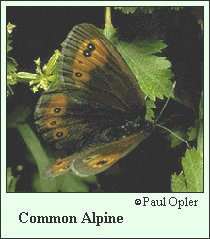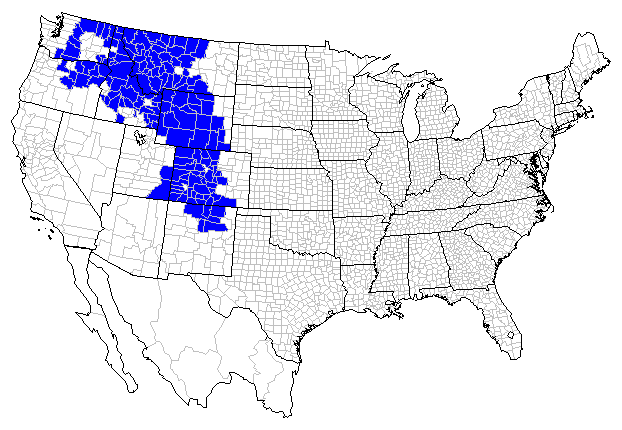 |
 

 |



Common Alpine (Erebia epipsodea Butler)
Wing span: 1 5/8 - 2 inches (4.2 - 5.1 cm).
Identification: Wings are dark brown. Upperside of both wings with white-centered submarginal eyespots in a yellow-orange patch. Underside of forewing is similar to the upperside; hindwing is gray with submarginal black eyespots.
Life history: Males patrol all day to watch for females. Eggs are laid on living and dead grasses. Third- and fourth-stage caterpillars hibernate.
Flight: One brood from mid-June to early August.
Caterpillar hosts: Probably grasses.
Adult food: Flower nectar.
Habitat: Moist open grassy fields, meadows, high prairies, open forests.
Range: Alaska south through the Rocky Mountains to northern New Mexico; west across the prairie provinces to southwest Manitoba.
Conservation: Not usually required.
The Nature Conservancy Global Rank: G5 - Demonstrably secure globally, though it may be quite rare in parts of its range, especially at the periphery.
Management needs: None reported.
References:
Opler, P. A. and V. Malikul. 1992. A field guide to eastern butterflies. Peterson
field guide #4. Houghton-Mifflin Co., Boston. 396 pages, 48 color plates.
Scott, J. A. 1986. The butterflies of North America. Stanford University Press,
Stanford, Calif. 583 pages, 64 color plates.
Tilden, J. W. 1986. A field guide to western butterflies. Houghton-Mifflin Co.,
Boston, Mass. 370 pages, 23 color plates.
Author: Jane M. Struttmann

